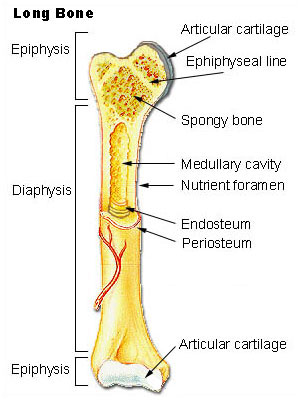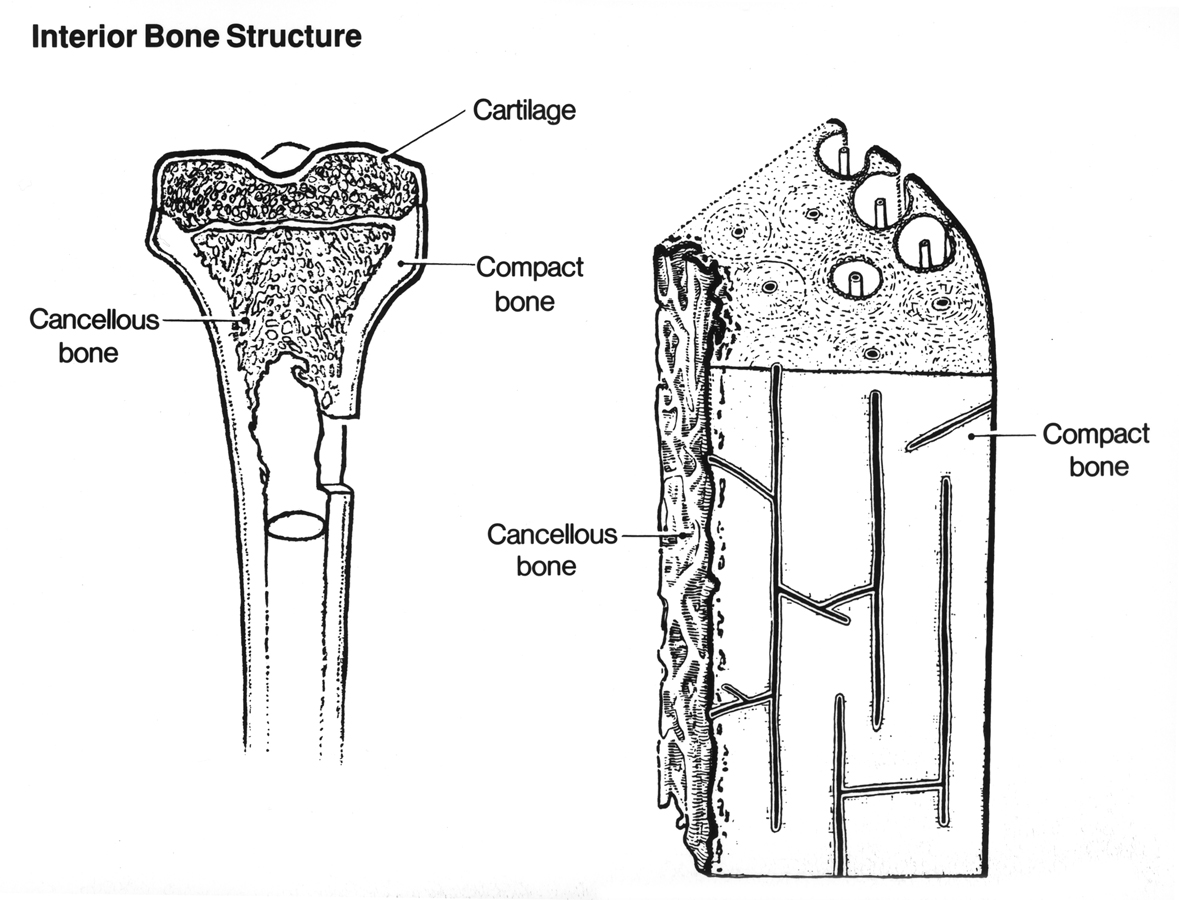 Bone is a living tissue that is constantly being rebuilt. Bone consists of collagen and crystals of calcium phosphate mineral. The combination of collagen and calcium phosphate makes bones strong, yet flexible to hold up under stress. The calcium phosphate also stores calcium for the body.
Bone is a living tissue that is constantly being rebuilt. Bone consists of collagen and crystals of calcium phosphate mineral. The combination of collagen and calcium phosphate makes bones strong, yet flexible to hold up under stress. The calcium phosphate also stores calcium for the body.
Bone also contains living cells that are constantly at work removing old bone (bone resorption) and building new bone (bone formation). This bone remodeling requires the coordinated action of of bone-removing cells called "osteoclasts" and bone-forming cells called "osteoblasts".
During childhood and the teenage years, new bone is added to the skeleton faster than old bone is removed, or resorbed. As a result, bones grow in both size and strength.
After you stop growing taller, bone formation continues at a faster pace than resorption until around the early twenties, when women and men reach their peak bone mass, or maximum amount of bone.
Peak bone mass is influenced by various genetic and external, or environmental, factors, including whether you are male or female (your sex), hormones, nutrition, and physical activity.
Genetic factors may determine as much as 50 to 90 percent of bone mass; environmental factors account for the remaining 10 to 50 percent. This means you have some control over your peak bone mass.

After your early twenties, your bone mass may remain stable or decrease very gradually for a period of years, depending on a variety of lifestyle factors such as diet and physical activity (see Milk and Bone Health).
Starting in midlife, both men and women experience an age-related decline in bone mass. Women lose bone rapidly in the first 4 to 8 years after menopause (the completion of a full year without a menstrual period), which usually occurs between ages 45 and 55. By age 65, men and women tend to be losing bone tissue at the same rate, and this more gradual bone loss continues throughout life.
Excessive bone loss, osteoporosis, increases the risk of bone fractures. Excessive bone loss following menopause, postmenopausal osteoporosis, is the most common cause of osteoporosis.
Source: Vivacare
Last updated : 7/29/2022